Can Your SMB Benefit From Portfolio Management?
Every year, thousands of prospective software buyers from small and midsize businesses (SMBs) contact Software Advice for help selecting the right tools to support their business. These interactions provide us with valuable insight into SMB market trends.
During a recent analysis of consultations with project management (PM) software buyers from information technology (IT) services and related fields, one finding in particular stood out:
21 percent of IT buyers need a PM solution with portfolio management capabilities.
Project portfolio management (PPM) is commonly associated with enterprise-level organizations. However, this statistic tells us that if roughly one-fifth of IT buyers are requesting PPM, SMBs from other industries may benefit from it as well.
In this article, we’ll explain why so many IT buyers need PPM and how SMBs in other fields might also benefit from investing in a PM solution with portfolio management capabilities.
We’ve created this guide to walk you through the following:
(Click on a link below to jump to that section.)
Evaluating Your Need for Portfolio Management
Benefits of Portfolio Management
Top Project Portfolio Management Tools for SMBs
Evaluating Your Need for Portfolio Management
At its most basic level, portfolio management helps centralize and coordinate a business’s project efforts. There are three main goals:
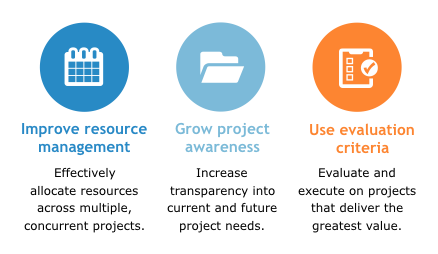
The IT firms in our analysis say they require PPM because they struggle to keep pace with the demand for projects at full resource capacity. However, they aren’t the only market segment that wrestles with a high demand for projects, and they are certainly not the only SMBs who struggle with limited resources.
Marketing firms, professional services organizations, construction and engineering are just a few examples of other industries that juggle multiple project requests and may benefit from PPM to help them collectively manage their project efforts.
Another consideration when evaluating whether your SMB is ready for portfolio management is PM maturity. Our research shows that IT firms tend toward a higher PM maturity than the PM buyer market as a whole:
While the majority of general SMB PM software buyers are purchasing their first PM solution, nearly 60 percent of IT professionals are looking to replace their existing PM software with a more advanced solution.
We estimate that this puts the general PM market at a level two PM maturity. However, IT organizations and other SMBs ready to upgrade to a more comprehensive PM solution are most likely at a level three:
Breakdown of PM Maturity Levels 2 and 3
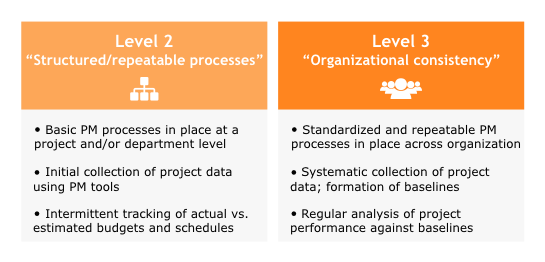
PM Maturity Levels
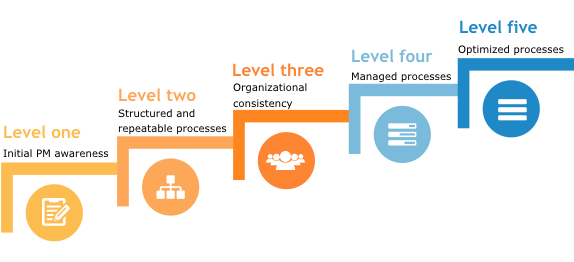
At a level three PM maturity, most organizations have established a business unit to support project managers and help institutionalize project processes, commonly known as a project management office (PMO). This unit is a good indicator that your organization is ready for and could benefit from portfolio management.
To sum up: While not every SMB is at a level of PM maturity or project complexity that warrants portfolio management practices, here are two indicators that yours might be:
If your organization is managing several concurrent projects and struggling with resource constraints, then you might consider investing in a PM platform with portfolio management capabilities.
If your organization has established or is looking to create a business unit to oversee project processes at a departmental or organizational level, you’re most likely at a level of PM maturity that can benefit from portfolio management.
Benefits of Portfolio Management
Implementing PPM can benefit your organization in a variety of ways. Here are some specific areas where PPM might bring about improvements:
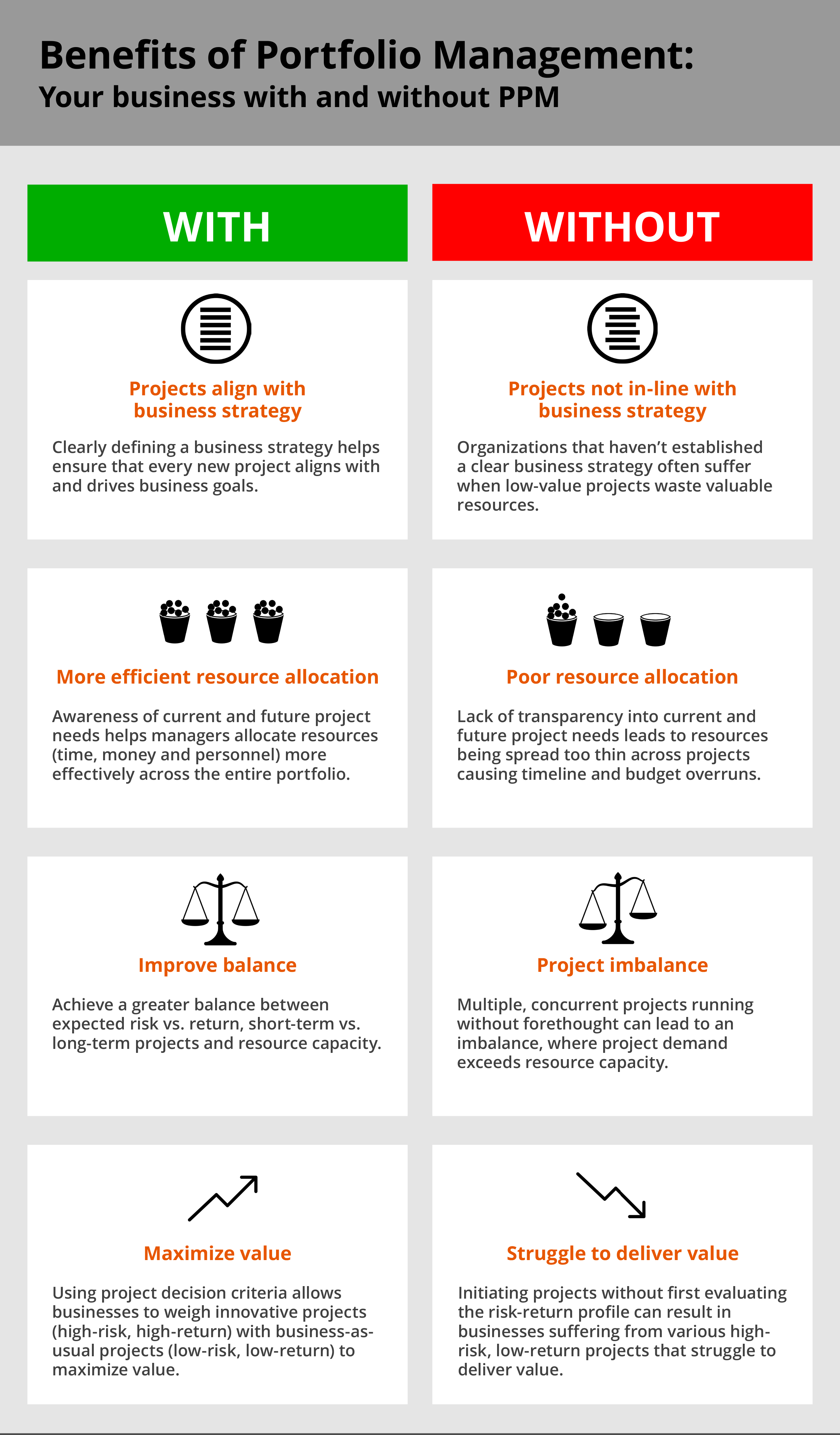
Top Project Portfolio Management Tools for SMBs
Now that you’ve evaluated whether your SMB can benefit from portfolio management, the next step is to compare software solutions.
Successful portfolio management hinges on the PPM tool used to deploy PPM processes.
Many portfolio management platforms are designed for enterprise-level organizations and have capabilities beyond the scope of what an SMB needs.
While it’s important to choose a tool that can support both your current and future needs, investing in platform more advanced than your current capabilities will result in poor user-adoption and a negative user-experience.
Avoid this situation and choose the right PPM tool for your SMB by:
Taking your time when comparing solutions
Discussing your needs with vendors
Taking advantage of free trials and product demos
Involving stakeholders and your project team in the decision
Below we’ve outlined several key capabilities to look for as you evaluate solutions, and we’ve provided a rundown of some of the highest-rated PPM solutions on Software Advice.
Critical capabilities SMBs should look for in a portfolio management software include:
Advanced resource management | Effectively allocate resources across multiple projects. Assign critical resources to high-priority projects and track progress toward milestones and project delivery. |
Dashboards | Centralize portfolio information and customize dashboards according to user, e.g., executive views, manager views. Gain a bird’s-eye-view of individual project progress as well as how the entire portfolio is performing against objectives. |
Reporting and analytics | Track progress against baselines for scope, budget and timeline and monitor performance metrics, such as return on investment (ROI) and earned value indicators including cost performance index (CPI) and schedule performance index (SPI). |
Project lifecycle management | Manage projects from concept to delivery. Create risk-return profiles and compare projects within a portfolio to optimize business value. Many tools include project archives, which act as knowledge centers and historical archives. |
Issue/change management | Identify potential risk areas during project planning, monitor new issues during project execution and keep track of all project and portfolio change requests. |
The following are examples of highly rated PPM tools on Software Advice, listed in alphabetical order:
| |
| |
| |
|
These solutions can help SMBs as they develop and scale PPM processes. Each is equipped with the capabilities mentioned above, which can help your organization as you begin to implement portfolio management processes.
Clarizen: A cloud-based solution specifically designed for marketing teams, IT professionals and service-oriented organizations. Clarizen is sold on a tiered pricing model that grows more advanced as packages scale. However, they also offer four different role-based licenses.
The benefit these purchasing options provide SMBs is that they can start at a lower tier and gradually increase their investment as their PPM needs progress. Additionally, they can temper the cost of their investment by purchasing licenses according to the specific needs of the user. Click here to read user reviews.
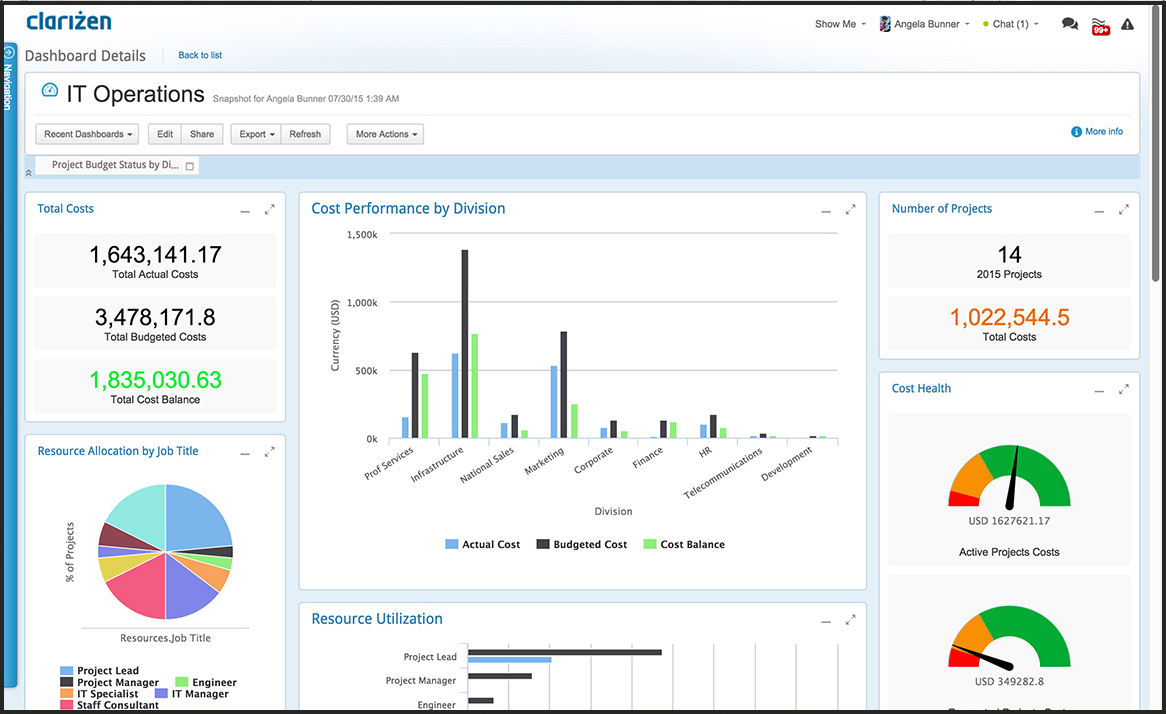

Dashboard showing IT operations in Clarizen
Mavenlink: A cloud-based solution, Mavenlink is sold in four packages: Teams, Professional, Premier and Enterprise. SMBs looking for full PPM capabilities would be best served by the Premier or Enterprise editions.
However, organizations not quite ready to implement portfolio management (e.g., those at a level two PM maturity) might consider investing in one of Mavenlink’s lower tiers and increasing their investment as their PM maturity advances. Click here to see how your peers have rated Mavenlink for qualities such as ease-of-use and customer support.
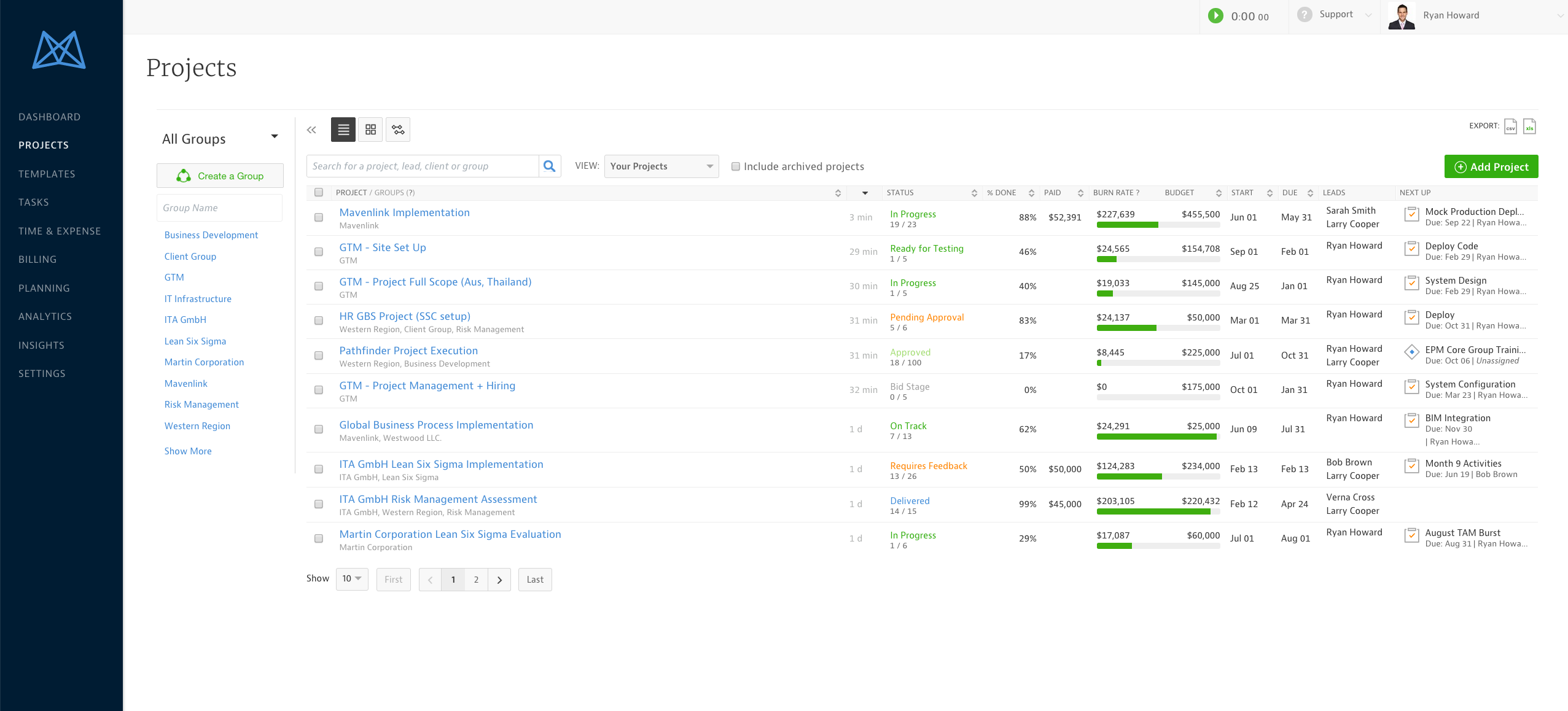

Project list in Mavenlink
Microsoft Project: MS Project is one of the leading PM solutions in the marketplace. It’s available as either an on-premise or cloud-based solution, both of which are sold in tiered, feature-packages. This means that SMBs can purchase the edition that best suits their needs now and advance to the next tier as their PPM needs progress.
However, reviewers point out that MS Project is more expensive than comparable solutions on the market and lacks some of the customization options available in other platforms.
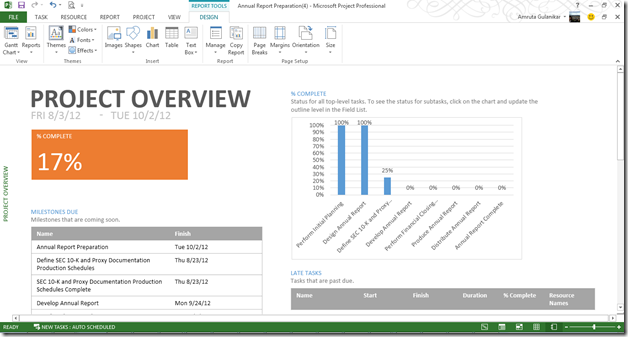

_Project overview dashboard in Microsoft Project
(Image used with permission from Microsoft)_
Workfront: Another cloud-based product that offers specialized solutions geared toward IT teams, professional services firms and marketing organizations. There is also an industry-agnostic solution for the general user. Workfront is sold via full-featured, role-based licenses, rather than a tiered, feature-package pricing model, in which capabilities increase as packages scale.
This provides organizations more freedom to customize the platform according to the unique needs of each user, however some users report the cost for this service is high.
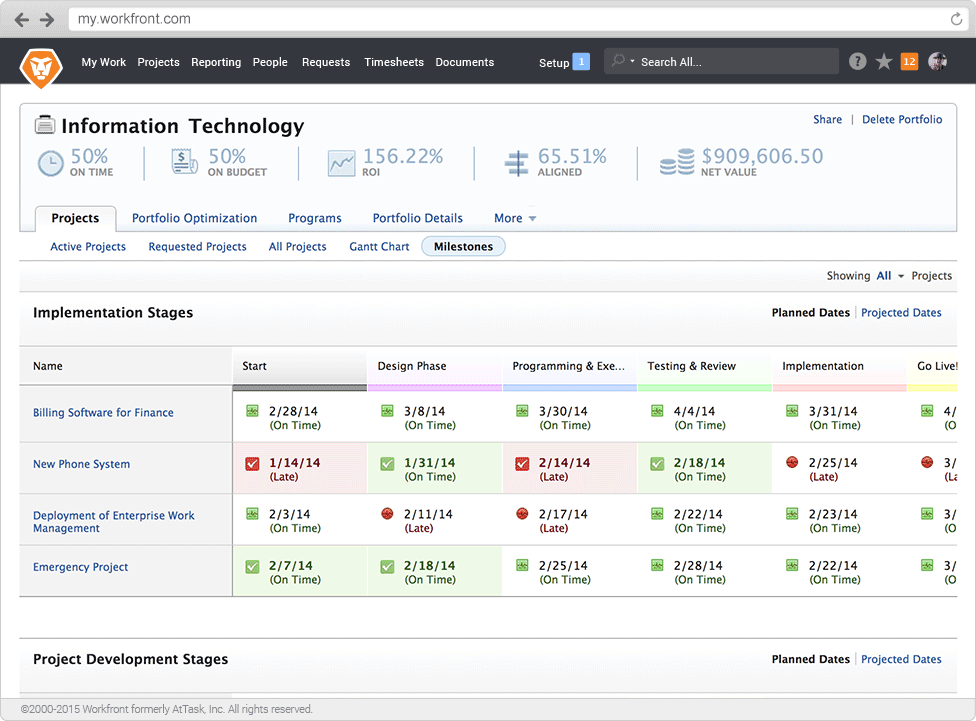
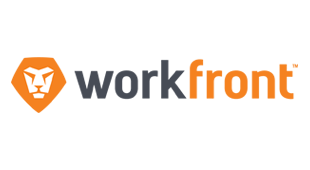
PPM in Workfront
Conclusions
While PPM is commonly considered an enterprise-level practice, SMBs struggling to keep pace with the demand for projects and having difficulty managing resources can most likely benefit from instituting portfolio management practices. Important considerations when evaluating your organization’s readiness for PPM include:
Level of PM maturity: The general SMB PM buyer may still be working toward standardizing PM practices (level two PM maturity). However, many IT organizations, marketing teams and service-oriented firms have progressed to the next level and are working toward organizational management of projects.
Prior to investing in a PPM solution, SMBs should evaluate their level of PM maturity, as well as the depth of their project portfolio, to ensure they are making a sound investment.
Presence of an established PM governance or a PMO: Level three organizations most likely have a dedicated business unit in charge of monitoring PM processes at a departmental or organizational level. This unit plays a critical role in PPM efforts, and it’s important that they have executive support.
SMBs who have an established PMO or equivalent business unit are good candidates for PPM software as they already have the infrastructure in place to support implementing PPM processes organization-wide.
Investing in a PM platform that scales with the organization: It’s important for SMB buyers to choose a system that supports their current portfolio management needs, but is also capable of supporting the PMO as they develop and scale PPM processes. PPM tools that are designed solely for enterprise-level organizations may have functionality that extends beyond the needs of SMBs, resulting in an unnecessarily expensive and cumbersome solution.
Critical portfolio management capabilities that SMBs should look for when evaluating PM solutions include dashboards for tracking performance metrics and life cycle management for monitoring projects within a portfolio from concept to delivery.
For more information about PPM or the portfolio management tools available for SMBs, email me at eileen@softwareadvice.com. I can answer any questions you might have and can help get you set up for a price quote or product demo, if you’re ready to start your software evaluation process.



